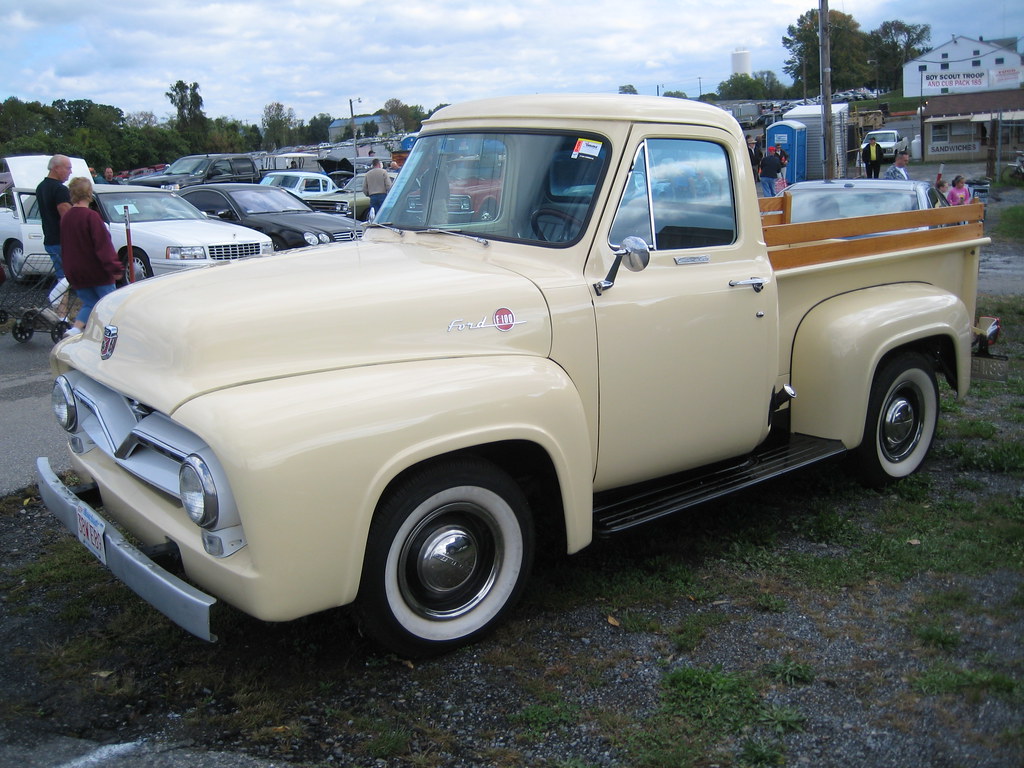
For countless automotive enthusiasts, the allure of a classic car transcends mere transportation; it’s a tangible link to history, a piece of art, and a significant personal investment. Yet, these cherished vehicles often spend years, sometimes even decades, in storage, waiting for their moment to roar back to life. The journey from a dusty relic tucked away in a garage to a gleaming, road-worthy legend is an endeavor that demands both scientific precision and artistic craftsmanship, a blend of dedication that truly breathes new life into these machines.
Bringing a vintage vehicle back onto the road after an extended period of inactivity is far more involved than simply turning the key. It requires a systematic, methodical approach to assess, maintain, and often restore every facet of the car, ensuring not just functionality but also safety and preservation of its legacy. This intricate process of revival is about honoring its past while meticulously preparing it for the demands of the present, avoiding potential pitfalls that could transform a dream into a costly regret.
This comprehensive guide will walk you through the essential first stages of this exciting transformation. We’ll begin by exploring the fundamental importance of proper storage, then move into the critical initial assessments and maintenance tasks required to awaken a slumbering engine and ensure every vital system is ready to operate. By laying a strong foundation, you can confidently embark on the rewarding journey of reviving your classic car, ensuring it continues to tell its unique story for generations to come.
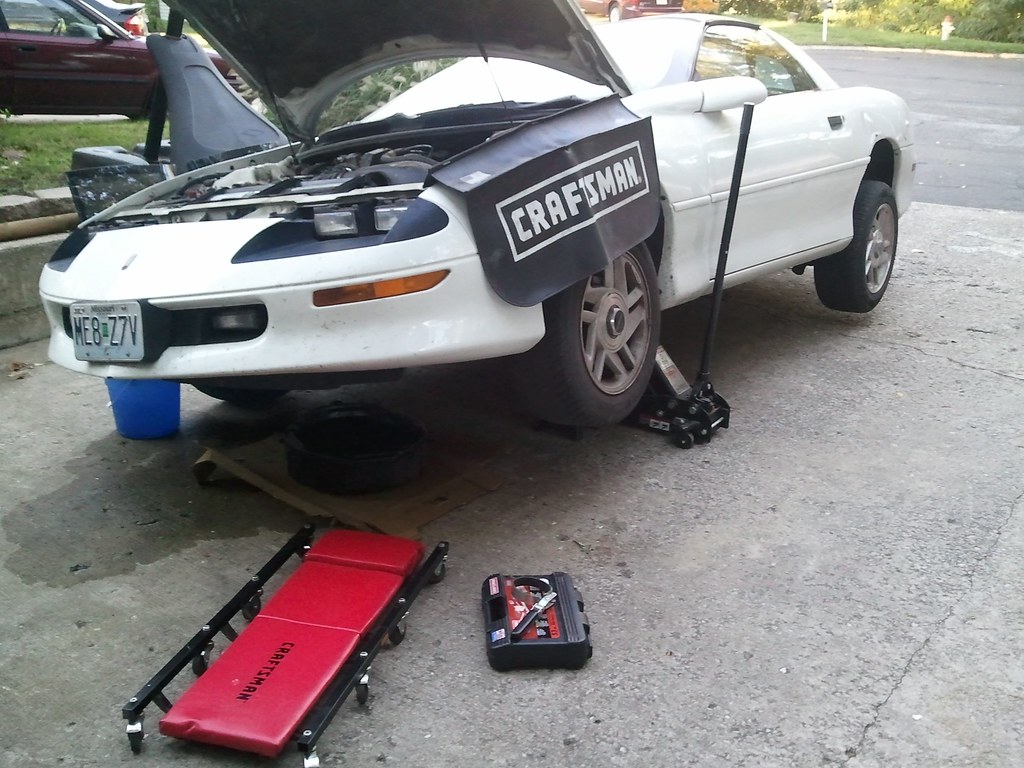
1. **Understanding Why Storage Matters**Collectors often pour their passion into the mechanical side of car care, diligently performing oil changes, utilizing battery trickle chargers, or even weekend start-ups. However, the long-term health and structural integrity of a truly classic vehicle hinge dramatically on the quality and conditions of its storage. Overlooking this vital aspect can lead to severe, even catastrophic, consequences for vintage paintwork, delicate leather interiors, and intricate carburetors, which are highly susceptible to environmental stressors.
Factors like significant temperature swings, uncontrolled humidity levels, pervasive dust accumulation, and prolonged exposure to direct sunlight are not just minor inconveniences; they are potent adversaries for a classic car. These elements can accelerate deterioration, causing irreversible damage that significantly impacts both the aesthetic appeal and mechanical functionality of the vehicle. A truly collector-focused storage facility understands these threats, offering far more than just basic shelter from the elements.
Such facilities typically boast advanced features like sophisticated fire suppression systems, precisely controlled humidity, stringent secured access protocols, and ongoing maintenance for battery and fuel systems. Some even offer innovative elevated storage racks specifically designed to prevent flat spots from developing on tires and to keep the vehicle’s suspension systems relaxed. Ultimately, comprehending the critical role of these storage conditions is the very first step in preserving the enduring artistry and value of your treasured classic car, setting the stage for its eventual rebirth.
Read more about: Navigating the 2025 SUV Landscape: Kelley Blue Book’s Expert Guide to the Best Two-Row Models for Suburban Families
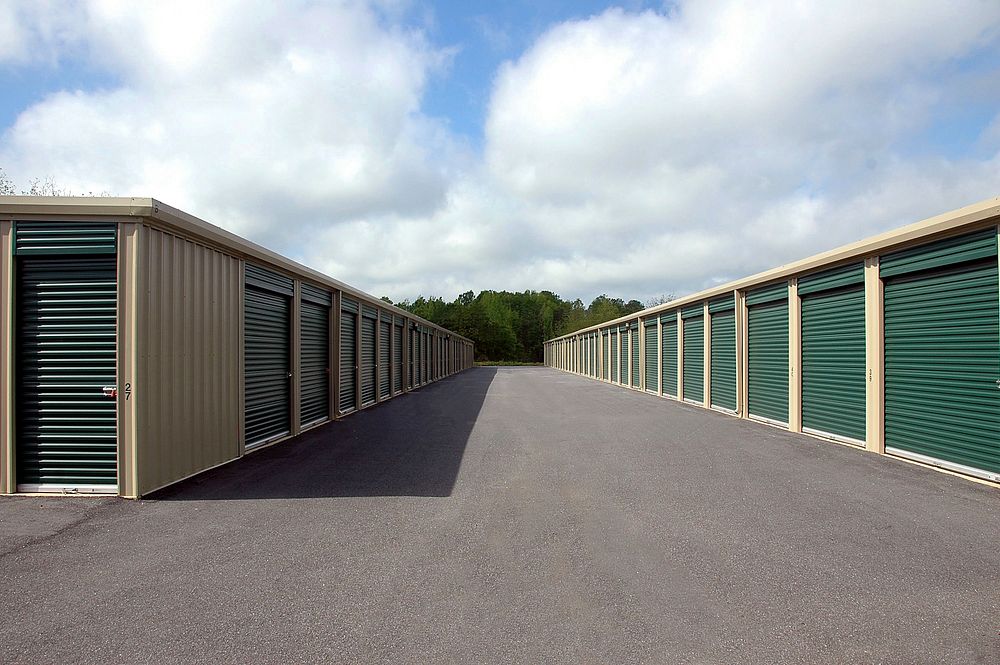
2. **Choosing the Right Storage Environment**When contemplating classic car storage care, the selection of an appropriate environment stands as a pivotal decision for safeguarding your vintage vehicle’s condition. Climate-controlled storage facilities offer an unparalleled advantage by maintaining consistently stable temperature and humidity levels. This unwavering stability is particularly crucial for antique car preservation, as even slight fluctuations can inflict significant and lasting damage upon the vehicle’s interior components, delicate paint finish, and overall structural integrity.
Conversely, standard storage environments, lacking sophisticated environmental controls, are inherently more vulnerable to the unpredictable whims of ambient temperature and humidity changes. This increased susceptibility can quickly lead to widespread issues such as surface rust, the insidious deterioration of various materials, and the accelerated aging of vital components. For any classic car owner considering long-term storage for their prized possession, the investment in climate control is unequivocally recommended to ensure the most thorough and effective preservation strategy.
The choice between indoor and outdoor storage options further underscores the importance of environmental protection for classic cars. Indoor storage unequivocally provides the highest level of defense against a myriad of environmental elements, including damaging rain, corrosive snow, and the relentless, fading effects of UV rays. Furthermore, it offers superior protection against potential vandalism and theft, establishing it as the preferred option for a substantial majority of classic car owners who prioritize the security and longevity of their vehicles.
While outdoor storage may present a more accessible and often more cost-effective solution, it inevitably exposes your classic car to the full spectrum of environmental hazards. If outdoor storage is the only viable option, the use of a high-quality, robustly weather-resistant car cover becomes absolutely essential. Such a cover can offer a degree of protection against dirt, moisture, and sun damage, yet it cannot, by any measure, fully replicate the comprehensive benefits and controlled environment afforded by dedicated indoor storage facilities.
Proper humidity and temperature control are, in fact, the cornerstones of effective vintage vehicle storage. Elevated humidity levels are notorious for fostering the growth of rust and mold, both of which are profoundly detrimental to a car’s long-term health and structural integrity. Conversely, excessively dry conditions can wreak havoc on sensitive materials, causing rubber components to become brittle and delicate leather upholstery to crack and degrade. Climate-controlled storage units are specifically engineered to meticulously manage these critical variables, consistently maintaining an optimal environment that supports the meticulous classic car storage care your vehicle deserves. For those utilizing standard storage, integrating dehumidifiers and temperature regulators can significantly mitigate these risks, allowing for continuous monitoring and necessary adjustments to ensure your vehicle remains in peak condition throughout its storage period.
Read more about: Navigating the 2025 SUV Landscape: Kelley Blue Book’s Expert Guide to the Best Two-Row Models for Suburban Families

3. **Preparing Your Classic Car for Storage**Diligent preparation of your classic car for storage is an absolutely critical step, ensuring that it remains in impeccable condition during its period of inactivity. This comprehensive segment will guide you through the essential actions required to meticulously prepare your vehicle for long-term storage, with a focused emphasis on thorough cleaning, detailed interior treatment, and crucial mechanical readiness, all designed to safeguard its integrity.
The act of cleaning and waxing the exterior of your classic car before placing it into storage is paramount for protecting its precious paintwork and actively preventing the onset of rust. Begin this process by washing the car meticulously, ensuring all accumulated dirt, grime, and environmental contaminants are thoroughly removed. It is imperative to use a pH-balanced car wash soap in conjunction with a soft sponge, a combination that effectively cleans without risking any scratches to the delicate paint finish.
Following the wash, dry the car completely with a clean, high-quality microfiber towel. This crucial step not only prevents unsightly water spots but also guarantees that the car’s surface is entirely devoid of moisture before the application of wax. The application of wax is a protective endeavor, as it establishes a robust, sacrificial layer over the paint, effectively shielding it from dust, airborne dirt particles, and ambient moisture. Always apply a high-quality car wax using a dedicated, clean applicator pad, working systematically in small, manageable sections, and strictly adhering to the manufacturer’s instructions regarding application techniques and crucial curing times to achieve optimal protection.
Interior detailing and upholstery protection are equally essential tasks, vital for preserving the pristine condition of your classic car’s cabin. Initiate this process by diligently removing any personal belongings and then thoroughly vacuuming the entire interior. This includes paying meticulous attention to often-neglected areas such as underneath the seats and within tight crevices, where dust and debris tend to accumulate. For the upholstery, select a specialized fabric or leather cleaner that is appropriate for the specific material, using a gentle hand to clean seats, dashboard surfaces, and any other panels with a soft cloth to avoid damage.
Subsequently, apply an upholstery protectant; this product is designed to help repel future stains and maintain the material’s original appearance and texture. For vehicles featuring luxurious leather interiors, the application of a dedicated leather conditioner is indispensable, as it works to keep the leather supple, preventing it from drying out, cracking, and suffering premature wear. By adhering to these detailed interior care steps, you actively contribute to the enduring comfort and aesthetic appeal of your classic car, ensuring its cabin remains a silent witness to countless cherished memories.
Fuel system and engine preparation represent the cornerstone of ensuring your classic car starts smoothly and reliably after its period of storage. This critical process commences by filling the gas tank to its full capacity; this simple yet effective measure is key to preventing the accumulation of condensation inside the tank, which is a common precursor to rust formation and potential fuel contamination. Immediately following this, introduce a high-quality fuel stabilizer into the tank. This additive is specifically formulated to inhibit the breakdown of fuel over extended periods, preserving its efficacy.
To ensure the stabilizer is fully integrated and effectively circulates throughout the entire fuel system, it is advisable to run the engine for a few minutes. This allows the treated fuel to reach all critical components, thereby maximizing its protective benefits. Furthermore, before putting the vehicle into storage, it is highly recommended to change the engine oil and replace the oil filter. Old engine oil can contain contaminants and acids that, over time, can cause corrosive damage to internal engine components, making fresh oil a crucial safeguard during dormancy. This comprehensive approach to fuel and engine preparation ensures that the heart of your classic car remains ready to beat again with vitality and precision when the time for revival arrives.
Read more about: The Lost Arts of the Pit: 18 Traditional Barbecue Techniques Every Home Cook Should Master
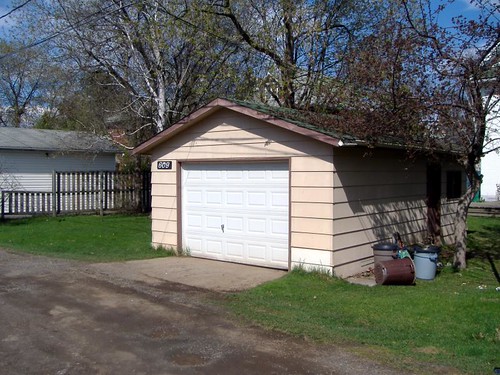
4. **Evaluating the Car and Creating a Restoration Plan**The very first step in the intricate restoration process, after retrieving your classic from storage, is an exhaustive inspection of the vehicle’s current condition. At this foundational stage, every single problem, from the subtle signs of rust and significant engine failures to the pervasive wear and tear on the interior, must be meticulously identified and documented. This comprehensive initial assessment then forms the bedrock upon which a detailed and actionable restoration plan is carefully prepared, aligning precisely with your specific restoration goals.
Your vision for the car’s future plays a pivotal role in shaping the entire trajectory of the process. Do you aspire to meticulously return your car to its exact original glory, reminiscent of the days when perhaps your father first drove it, preserving every historical detail? Or do you envision a tasteful blend of authenticity with modern enhancements, subtly integrating special additions such as period-correct vintage radios that conceal contemporary Bluetooth functionality, or bespoke, handmade leather upholstery that elevates comfort without compromising classic aesthetics? This fundamental decision is what ultimately dictates the course and scope of the entire restoration journey.
Critical assessment criteria are paramount in this initial phase. The condition of the chassis, for instance, is a primary concern, as it constitutes the main skeletal structure of the vehicle. Any signs of rust, cracks, or deformations can severely compromise the chassis’s integrity, making its assessment one of the most important aspects of the restoration. Similarly, the engine’s condition is analogous to the vehicle’s heart; if it has suffered significant damage, it can easily become one of the single largest cost items within the entire restoration budget, as engine repair and rebuilding directly and profoundly impact the vehicle’s ultimate performance and reliability.
Furthermore, the brake and suspension systems in classic cars frequently exhibit lower performance capabilities when compared to their modern counterparts. Consequently, these components represent an undeniably important segment of the restoration process, essential for ensuring both safety and drivability. Lastly, the interior condition, encompassing elements such as seats, upholstery, the steering wheel, and dashboard panels, inevitably succumbs to wear over time. For this reason, the interior also necessitates careful restoration to bring it back to its former splendor. This rigorous assessment phase is, without question, the most crucial step in accurately determining whether the restoration will culminate in resounding success and enduring value.
By accurately and thoroughly analyzing every aspect of the vehicle’s current condition, you empower yourself to create an unshakeable and solid plan for the entire restoration process. This meticulous evaluation, especially when applied to iconic models like 1960s American muscle cars, establishes a robust foundation that is indispensable for any restoration project. It transforms a daunting task into a series of manageable, strategic steps, guided by a clear vision and a deep understanding of your classic car’s specific needs.
Read more about: Your Ultimate Guide to Navigating the Used Car Market: Avoid Rip-Offs and Drive Away with Confidence

5. **Inspecting and Maintaining the Engine Before Starting**Before you even consider attempting to restart your classic car after an extended period of storage, a meticulously thorough inspection of its engine is absolutely crucial. Begin by carefully checking the engine oil. Old, stagnant oil, having sat for years, will likely have degraded significantly, breaking down into a sludgy consistency that can cause considerable harm to the engine’s delicate internal components upon startup. To mitigate this risk, it is imperative to change the old oil completely and simultaneously replace the oil filter, thereby ensuring optimal and proper lubrication from the very first crank.
Next, turn your attention to the coolant system. Visually inspect for any discernible signs of leaks around hoses and connections, and then meticulously check the coolant level within the reservoir. If the coolant appears discolored, cloudy, or has not been serviced for a substantial duration, it is strongly advised to flush the entire system. Following the flush, refill it with the manufacturer-appropriate mix, a critical step that prevents both catastrophic overheating and detrimental internal corrosion, safeguarding the engine’s long-term health.
The fuel system also demands careful examination. Fuel that has languished for years can degrade significantly, transforming into a varnish-like substance that can cause severe starting issues and clog delicate fuel lines. To address this, drain all the old, stale fuel from both the tank and the lines, and then replenish with fresh, high-octane fuel suitable for your classic. While you’re in this area, thoroughly inspect the fuel filter for any signs of clogs or blockages, replacing it if necessary, and verify the proper operation of the fuel pump to ensure an uninterrupted supply to the engine.
Carefully assess the air intake system and the air filter. A clogged air filter will severely restrict the necessary airflow to the engine, inevitably leading to poor combustion and significantly diminished engine performance. Clean or replace the filter as required to ensure unobstructed air passage. During this inspection, it is also prudent to look for any tell-tale signs of rodent activity; these unwelcome guests can cause considerable damage by chewing through vital hoses or electrical wiring, creating unexpected and complex issues.
Proceed to meticulously examine the ignition system. Carefully check the spark plugs for any indications of wear, excessive carbon buildup, or damage, replacing them if necessary to ensure a strong, consistent spark. Additionally, confirm that all ignition wires are in excellent condition, free from cracks or fraying, and securely connected at both ends. A malfunctioning or compromised ignition system is a primary culprit for preventing an engine from starting altogether or for causing it to run roughly and inefficiently.
Finally, undertake a comprehensive inspection of all engine belts and hoses. Look closely for any signs of cracks, fraying, hardening, or leaks, which are all indicators of deterioration. Proactively replacing any worn or suspect components at this stage can prevent unforeseen breakdowns and ensure the utmost reliability when you finally bring your cherished classic vehicle back to life. These meticulous pre-start checks are foundational to a successful and safe engine revival.
Read more about: Mastering the Grip: Your Ultimate DIY Guide to Tire Tread Safety in Rainy & Snowy Conditions

6. **Checking and Replacing Fluids After Storage**When you are diligently preparing your classic car for its grand restart after a prolonged period of storage, the meticulous process of checking and replacing all vital fluids is an absolutely crucial step. This ensures not only optimal performance but also the enduring longevity of your cherished vehicle. Old fluids, having sat stagnant for extended durations, can accumulate harmful contaminants and degrade in effectiveness, losing their crucial ability to provide adequate protection or essential lubrication for the myriad of vital engine and drivetrain components.
Start your fluid overhaul with the engine oil. This fundamental lubricant can collect a host of contaminants and acids over time, which, if left unaddressed, can cause significant wear and potential damage to precision-engineered engine parts. Therefore, thoroughly drain the old oil completely from the system and replace it with fresh, high-quality engine oil that precisely meets your vehicle’s specific vintage specifications. This simple act provides a renewed layer of protection for the heart of your classic.
Next, the coolant system demands your attention. Older coolant formulations can lose their inherent effectiveness, leading to a diminished ability to regulate engine temperature and, potentially, even fostering corrosion within internal components. The recommended course of action is to completely flush the entire system, removing all traces of the old fluid, and then replenish it with new coolant. Ensure you use the correct mix ratio to prevent issues ranging from freezing in cold climates to dangerous overheating in warmer conditions.
Brake fluid is another critical liquid that must be carefully checked and replaced as a matter of safety. Over time, brake fluid is hydroscopic, meaning it readily absorbs moisture from the atmosphere. This moisture can severely compromise its boiling point, leading to a spongy pedal feel and, more critically, potential brake fade or failure. Bleed the brake lines meticulously to expel all old fluid and trapped air, then refill with fresh, clean brake fluid to restore maximum braking performance and safety.
Do not overlook the transmission fluid, especially if your classic is equipped with an automatic transmission; this fluid can also degrade and lose its lubricating properties while sitting idle. Check its level and carefully assess its condition. If it appears dark, exhibits a burnt smell, or shows signs of significant discoloration, it is undoubtedly time for a change. Proper, fresh transmission fluid is indispensable for ensuring smooth gear shifting, preventing undue wear, and maintaining overall drivability, which is vital for a pleasant return to the road.
Finally, extend your fluid inspection to the power steering fluid and the differential oil. These often-neglected fluids also degrade over time and can significantly affect steering responsiveness and the smooth operation of the differential. Inspect these systems closely for proper levels and condition, and replace the fluids as needed. By undertaking this comprehensive and meticulous checking and replacing of all necessary fluids, you are not merely performing maintenance; you are proactively ensuring that your classic car is in the best possible shape, ready to deliver optimal performance and a joyous driving experience for the many miles and years ahead. This proactive approach is fundamental to the successful revival and long-term health of your treasured vehicle.
Read more about: Your Ultimate Checklist: 14 Essential Things to Examine During Your Used Car Test Drive

7. **Assessing Tires and Suspension for Safe Driving**As your cherished classic car prepares for its return to the open road after a prolonged period of inactivity, a meticulous assessment of both its tires and suspension system becomes absolutely critical. These two component groups are not merely ancillary parts; they are intrinsically linked to the vehicle’s safety, precise handling characteristics, and overall driving performance. Ignoring their condition after extended storage can lead to unstable handling, increased wear on other components, and, most importantly, significant safety risks for both the driver and others on the road.
Begin your exhaustive inspection with the tires, the vehicle’s sole contact with the road. Scrutinize each tire for any discernible signs of dry rot, which manifests as fine cracks on the sidewalls, or unusual bulges that could indicate internal structural damage. Tires that have been stationary for an extended period are highly susceptible to losing air pressure, and may also develop permanent flat spots where the weight of the car rested, affecting ride quality and longevity. It is imperative to inflate all tires to the manufacturer’s exact recommended pressure, which can typically be found in the owner’s manual or on a placard within the door jamb. Furthermore, ensure that the tread depth is more than sufficient for safe driving in varying conditions; if any tire exhibits significant damage, excessive wear, or severe dry rot, it must be replaced without hesitation to prevent a potential blowout or loss of control.
Following the tire inspection, direct your meticulous attention to the suspension system, which is crucial for maintaining vehicle stability and comfort. Look diligently for any visible signs of wear, damage, or degradation to key components such as shocks, struts, and various bushings. Conduct a thorough check for fluid leaks around the shock absorbers and struts, as these are clear indicators that these vital damping components may require immediate replacement. Moreover, verify that all suspension bushings remain intact, exhibiting no signs of excessive wear or cracking, which can lead to imprecise handling and a noisy ride. A properly functioning and well-maintained suspension system is fundamental not only for enhancing vehicle stability and comfort but also for ensuring a predictable and safe driving experience.
After completing this comprehensive assessment, and assuming all components are deemed safe and functional, it is highly recommended to take your classic car for a short, cautious test drive. Choose a safe, open road with minimal traffic, and pay exceptionally close attention to any unusual noises, vibrations, or irregularities in handling. These subtle cues may suggest that further adjustments, fine-tuning, or more in-depth mechanical interventions are still necessary. By meticulously evaluating your tires and suspension, you are proactively ensuring a smooth, predictable, and, most importantly, safe return to the road with your treasured classic car, allowing it to perform as magnificently as it looks.
Read more about: Your Ultimate Checklist: 14 Essential Things to Examine During Your Used Car Test Drive
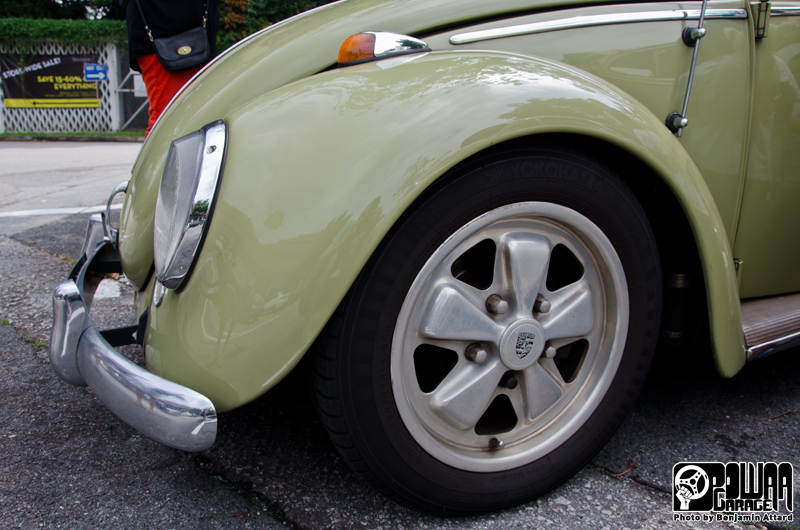
8. **Sourcing Parts for Classic Car Restoration**Embarking on the classic car restoration journey means facing the often-arduous, yet profoundly rewarding, challenge of sourcing the correct parts. This crucial phase is often described as a real test of patience, particularly when the components required are rare or specific to a limited production model. The authenticity of these parts directly influences not only the historical accuracy of the restoration but also, crucially, the vehicle’s ultimate collectible value. Finding that long-awaited, authentic piece, whether a meticulously recreated emblem or an original engine component, can be a thrill akin to a treasure hunt, deepening the restorer’s bond with their project.
When it comes to sourcing, restorers generally navigate between two primary categories: original parts and aftermarket parts. Original parts, by definition, are the best choice for preserving the vehicle’s intrinsic value and its period-correct appearance. These components were either installed at the factory or are genuine replacements from the original manufacturer. However, as classic vehicles age, these parts inevitably become scarce and increasingly difficult to locate. For these elusive original components, classic car dealers specializing in specific marques, dedicated collectors who might hold a trove of spares, and specialized online auctions are often the most fruitful avenues. Forums like ClassicCarForum.com or Hemmings forums also provide invaluable networks for connecting with other enthusiasts and uncovering hidden gems.
Conversely, when original parts are simply unavailable or prohibitively expensive, aftermarket parts offer a viable alternative. The key, however, lies in selecting aftermarket components that are exceptionally close in both quality and aesthetics to the original ones. The market has expanded significantly to include high-quality reproduction parts that meet stringent standards, providing solutions that didn’t exist decades ago. While some purists may exclusively seek original components, many modern restorers judiciously blend original and new parts, especially when it comes to integrating modern performance-enhancing components subtly into the classic design, a strategy that improves safety and drivability without overtly compromising the car’s vintage spirit.
Ultimately, sourcing spare parts is an undeniably critical step for the overarching success of any restoration project. The quality, and perhaps more importantly, the authenticity of these procured parts, are in direct correlation with the vehicle’s long-term value and its ability to captivate judges at concours events or potential buyers. For example, learning how to discover the right parts for a 1970s Ford model involves delving into model-specific forums, vintage parts expos, and specialized suppliers. This meticulous attention to detail during the parts sourcing phase sets a solid foundation for achieving an authentic, high-value classic car restoration that truly honors its legacy.
Read more about: Unleash Your Inner Gearhead: 14 Classic Car Restoration Projects Under $10K That Promise High Returns
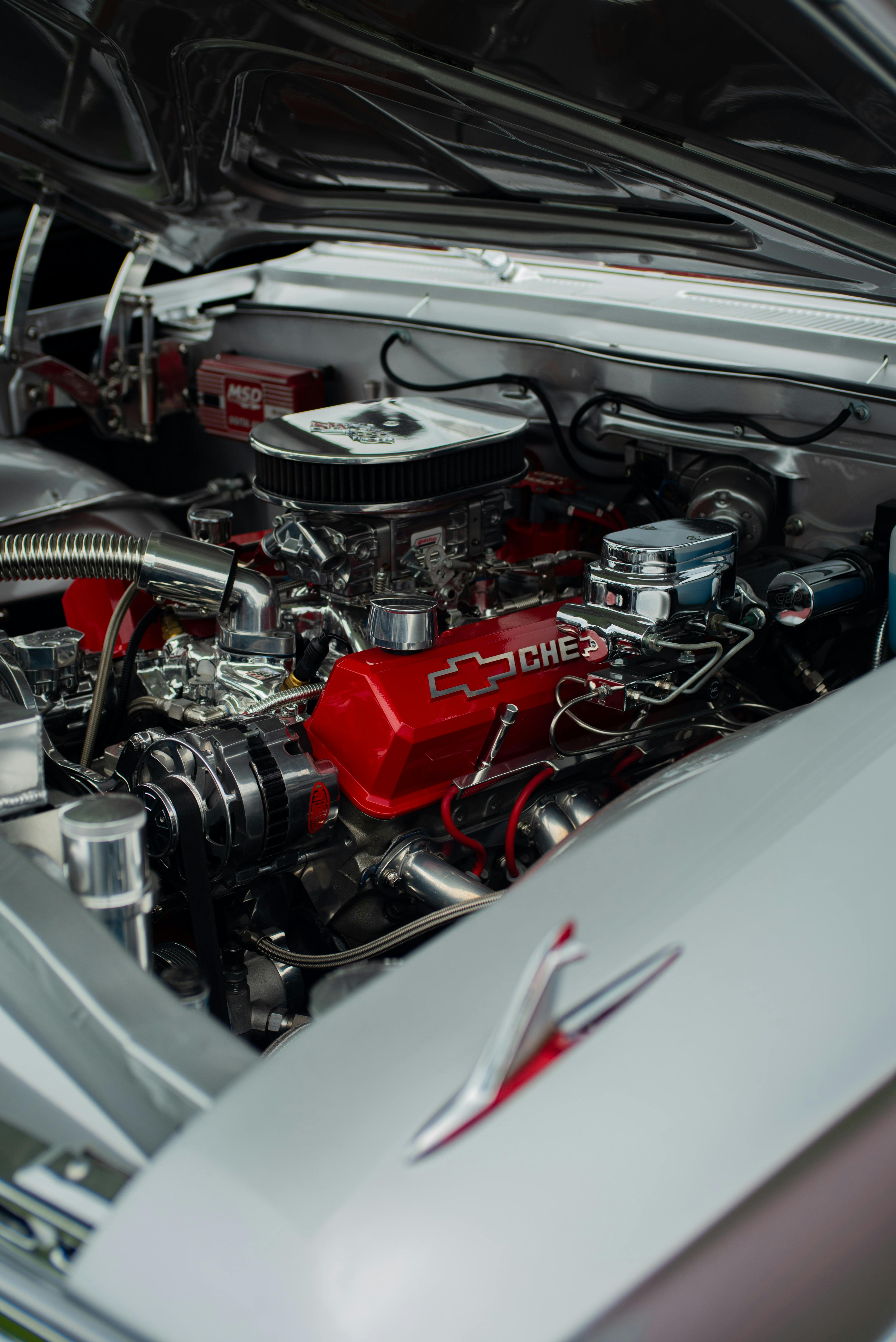
9. **Classic Car Engine and Mechanical System Restoration**The engine of a classic car is far more than just a collection of mechanical parts; it is, quite literally, the heart of the vehicle, eagerly waiting to beat with renewed vigor. Its restoration, along with the entire drivetrain, demands an unparalleled level of professionalism, meticulous precision, and an intricate understanding of vintage engineering. Unlike the pre-start inspections, which focus on getting an engine running safely, full engine restoration often involves a complete rebuild from the ground up, meticulously replacing or reconditioning every component from the pistons and cylinder heads to the intricate carburetors, ensuring it meets or exceeds its original factory specifications.
Engine repair and rebuilding are often the first major phases in a comprehensive restoration for good reason. The reliability of these mechanical systems profoundly affects not only the aesthetic appearance of the car but, more crucially, the entire driving experience and its safety. Each component, from cylinder heads and gaskets to pistons and crankshafts, should be painstakingly inspected for wear, fatigue, or damage. Any part showing compromise must be carefully replaced with period-correct or high-quality aftermarket equivalents. Furthermore, the engine’s auxiliary systems, including the cooling system, oil pump, fuel delivery, and all electrical components, must be thoroughly checked, repaired, or replaced to ensure full, harmonious functionality and optimal performance.
Beyond the engine block itself, the brake and suspension systems in classic cars warrant particularly close attention. These systems frequently exhibit significantly lower performance capabilities when juxtaposed against their modern counterparts. This inherent difference makes their complete restoration a critical undertaking, indispensable for ensuring both the safety and the enjoyable drivability of the revived vehicle. The entire brake system, from master cylinder to calipers and lines, must be completely restored, addressing any corrosion or wear. Similarly, the suspension components, including springs, shock absorbers, bushings, and control arms, should be rigorously inspected for proper function and replaced as needed, restoring the car’s original ride quality and handling characteristics.
The proper, harmonious functioning of the engine and all associated mechanical systems is undeniably vital for both the immediate safety of the vehicle and its long-term intrinsic value. For muscle cars, this might mean overhauling a V8 block to factory specs, while for more exotic vehicles, it could involve precision machining of hard-to-find components. Learning the comprehensive steps to restore a V8 engine, for instance, involves understanding intricate timing, valve clearances, and fuel delivery curves, all designed to bring back the exhilarating performance of your classic muscle car. This meticulous mechanical restoration is truly the enduring heartbeat of a successful classic car rebuild, transforming a dormant machine into a dynamic, road-ready marvel.
Read more about: Your Ultimate Checklist: 14 Essential Things to Examine During Your Used Car Test Drive
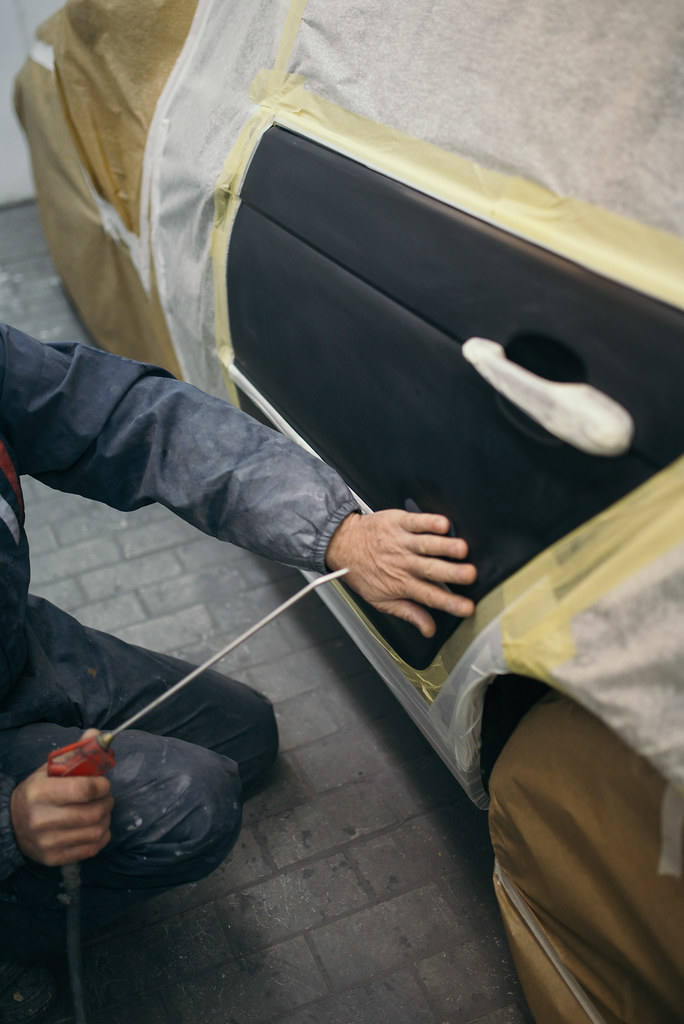
10. **How to Restore and Paint Your Classic Car Body**The exterior of a classic car is undeniably its most eye-catching and evocative feature, serving as the immediate visual testament to its timeless design and historical significance. However, decades of exposure, neglect, or improper storage can lead to common flaws such as pervasive rusty bodies, unsightly scratched surfaces, or minor to significant dents—all imperfections that tragically obscure the vehicle’s inherent timeless lines and detract from its grandeur. Therefore, the body restoration process is a transformative journey, meticulously designed to renew the car’s outward splendor and restore its original captivating allure.
The initial, foundational step in comprehensive body restoration involves sandblasting all exterior surfaces to thoroughly and effectively clean them down to bare metal. This aggressive but essential process eliminates all traces of old paint, rust, and filler, providing an unadulterated canvas for subsequent work. Following sandblasting, any structural integrity issues are addressed through precise welding, dents are carefully hammered out or filled, and the surface is meticulously prepared with body putty. This painstaking preparation is paramount, creating an impeccably smooth and flawless foundation that is absolutely essential for the subsequent layers of paint to adhere perfectly and achieve an unblemished, show-quality finish.
Choosing the right paint color for your classic car is just as profoundly important as the quality of its application. This decision goes beyond mere aesthetics; it directly impacts the vehicle’s historical accuracy and, critically, its collectible value. Staying absolutely true to the original factory colors, such as the iconic 1969 Dodge Charger Hemi Orange, offers a significant advantage in terms of authenticity and market desirability. Restorers often consult factory records or period photographs to ensure color fidelity, understanding that every shade tells a part of the car’s unique story and history, connecting it to its original production era and preserving its inherent character.
The actual painting process is a sophisticated multi-stage endeavor that dramatically improves the car’s aesthetic appearance and provides a vital layer of protection. It commences with a final, exhaustive cleaning of the vehicle to remove any residual dust or contaminants. Then, multiple layers of high-quality automotive primer are applied, sanded smooth, and followed by several coats of the chosen, meticulously matched paint. This is often followed by a clear coat, which provides depth, shine, and an additional layer of durability. After the painting is complete, the car’s surface undergoes an intensive polishing and buffing regimen, a final artistry that enhances its reflective shine and fortifies its durability against future environmental aggressors. This comprehensive body restoration not only renews the vehicle’s appearance from start to finish but also significantly elevates its overall value and market appeal, ensuring it stands as a gleaming testament to automotive artistry.
Read more about: The Best Classic TV Reboots That Totally Nailed It (And Didn’t Ruin Your Childhood)

11. **Interior Restoration Guide for Classic Cars**The interior of a classic car holds a unique significance; it is more than just a cabin—it is one of the “silent witnesses to memories,” an intimate space that has absorbed countless journeys and conversations over the decades. Consequently, this section often reveals the most poignant signs of age and wear: worn seat upholstery, aesthetically diminished or cracked steering wheels, and non-functional gauges that have ceased their vigil. The meticulous interior restoration process is therefore dedicated not only to revitalizing this crucial space but also to preserving its nostalgic elements, maintaining an authentic and tangible connection to the past.
Seat restoration typically forms the cornerstone of any interior revival. Original seat upholstery, crafted from luxurious leather or high-quality fabrics, inevitably succumbs to the ravages of time, experiencing fading, tearing, and general degradation. The restoration must be executed precisely in line with the vehicle’s original design and material specifications, ensuring historical accuracy. This often involves sourcing period-correct fabrics or leathers, meticulously stitching new upholstery, and refurbishing the underlying seat frames and padding to restore both their aesthetic appeal and their original comfort. The goal is to make the seats look and feel as they did on the day the car rolled off the assembly line, ready for new journeys.
Beyond the seats, critical touchpoints like the steering wheel and pedals also endure considerable wear over time due to constant interaction. These components should be carefully restored to closely resemble their original versions, which might involve re-casting, re-covering, or intricate repair work. A comfortably restored steering wheel not only enhances the visual authenticity of the cabin but also significantly improves the overall driving experience, fostering a more pleasurable connection between driver and machine. Equally vital is the restoration of the electrical system that powers the interior; lights, dashboard indicators, and other electrical components must all function properly, ensuring both convenience and safety.
Interior restoration is a highly specialized craft that profoundly enhances both driving comfort and the aesthetic value of the classic car. It’s about more than just superficial repairs; it’s about recreating the original ambiance and feel of the vehicle. With a comprehensive classic car interior restoration guide, enthusiasts can rediscover the original spirit of iconic models like the Chevy Bel Air or Ford Fairlane, ensuring that every detail, from the pristine dashboard to the supple leather, continues to whisper tales of its storied past. This intricate work breathes new life into the cabin, ensuring it remains a cherished space for generations to come.
Read more about: Your Ultimate Checklist: 14 Essential Things to Examine During Your Used Car Test Drive
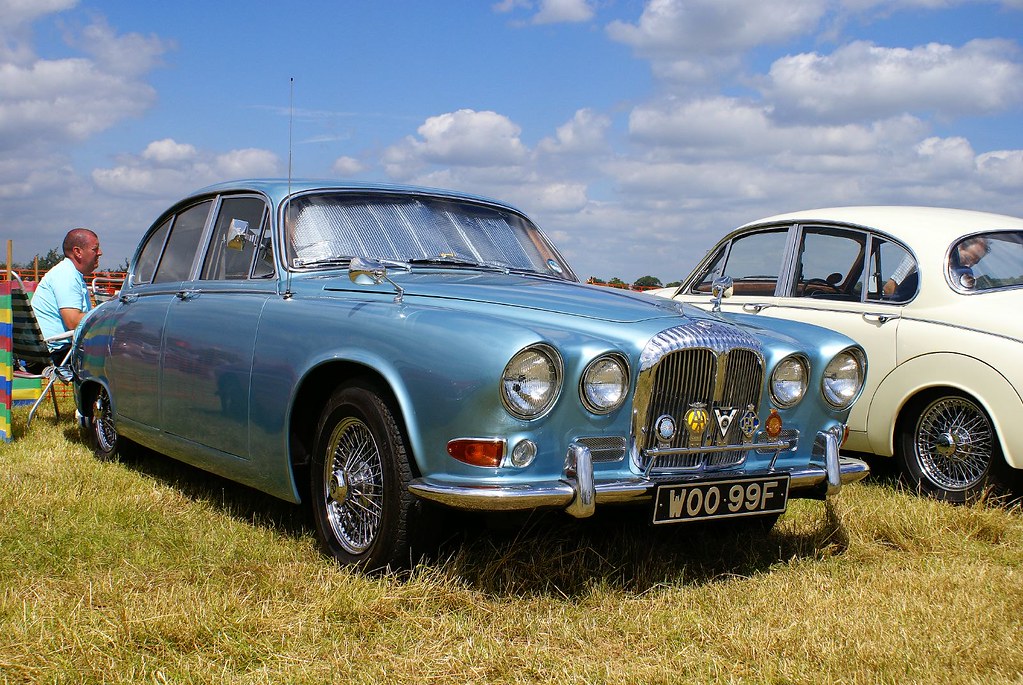
12. **Cost and Investment Value of Classic Car Restoration**Embarking on a classic car restoration project is an undeniably passionate endeavor, often perceived as a labor of love. However, it is also a process that can be significantly costly. Yet, with the right strategic restoration approach, this substantial investment can translate into a robust increase in the vehicle’s value over time, proving to be a wise financial decision for many collectors and enthusiasts. The blend of carefully selected parts, skilled labor, and devoted time is what ultimately cultivates a strong return on investment from your treasured vehicle.
The costs associated with restoration can vary widely, influenced by the car’s make and model, the scarcity and originality of parts, and the quality of craftsmanship employed. To provide a clearer perspective, here’s an overview of average restoration costs by phase: Body Repair and Paint typically ranges from $4,000 to $10,000; an Engine Rebuild can be between $3,000 and $7,000; Interior Restoration often falls between $2,000 and $6,000; Sourcing Original Parts might add $2,000 to $5,000; and an Electrical System Upgrade could be $1,000 to $3,000. These figures suggest an estimated total budget ranging from $12,000 to $31,000, but restoring rare models like the 1957 Chevy Bel Air may indeed require a much higher budget due to specialized parts and intricate work. Despite these figures, proper planning allows for effective budget management, preventing the dream from becoming an overwhelming financial burden.
A successfully completed restoration is far more than just a mechanical overhaul; it elevates the vehicle into a work of art, enhancing both its driving pleasure and its tangible value. The meticulous care involved in sourcing authentic parts, executing precise engine rebuilds, perfecting the bodywork, and revitalizing the interior contributes directly to its ‘show-ready condition’ and its long-term appreciation as a collectible asset. By investing wisely in these key areas, you are not merely fixing a car; you are preserving a piece of automotive history, safeguarding its legacy, and ensuring its market desirability.
While the process can be time-consuming and fraught with unexpected challenges, the final result is almost invariably worth the sustained effort and financial outlay. A classic car restoration, when executed with dedication and expertise, transforms a dusty relic into a gleaming legend—a testament to passion, precision, and enduring artistry. This journey enhances both the driving pleasure and the intrinsic value of your vehicle, yielding significant emotional and financial rewards. It’s about more than just owning a classic car; it’s about nurturing a legacy and ensuring its enjoyment for future generations, allowing it to transcend time and continue telling its unique story on the open road.
Keeping the Classic Car Passion Alive
Classic car restoration is not merely a hobby; it is a profound tribute to the past, a tangible link to automotive heritage that resonates deeply with enthusiasts. Every bolt tightened, every layer of paint meticulously applied, and every stitch sewn into the upholstery holds a memory, a piece of history that is brought back to life. When your painstakingly restored car finally roars back onto the road, it symbolizes more than just you moving forward; it could very well be the beginning of a cherished legacy, a beautiful machine passed down through generations, each adding to its rich tapestry of stories.
In this incredible journey, where patience, unwavering effort, and an abundance of passion converge, every single step acts like a crucial gear in a time machine, propelling a piece of the past into the present and beyond. With the right, expertly executed restoration, your vehicle transcends its identity as mere transportation; it transforms into an exquisite work of art, a rolling sculpture, and simultaneously, a valuable investment that continues to appreciate in both monetary worth and sentimental value. While the entire process can indeed be time-consuming, demanding significant dedication and meticulous attention to detail, the profound satisfaction and the breathtaking final result are unequivocally worth every ounce of effort and every penny spent.
Read more about: Your Ultimate Checklist: 14 Essential Things to Examine During Your Used Car Test Drive
Ultimately, a classic car restoration is a holistic process that not only rejuvenates a vehicle’s mechanical and aesthetic integrity but also significantly enhances both its driving pleasure and its market value. A successfully completed restoration can bring immeasurable emotional fulfillment, as you witness a piece of history reborn, alongside considerable financial rewards, as its value often increases substantially. So, what’s your classic story? Share it with us; let the roar of these legends echo on, inspiring new generations of automotive passion.


